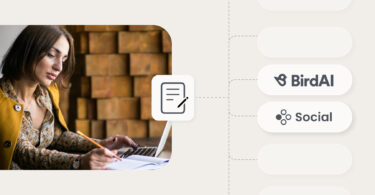In the whirlwind of tweets, likes, shares, and comments, a goldmine of insights is waiting for savvy businesses to listen. This practice, done by social media monitoring tools, enables brands to keep a pulse on their online reputation and insights into consumer behavior and emerging trends.
Following this, when Birdeye conducted a survey, we found an interesting fact: 81% of businesses manage social media at the corporate level. This social media statistic makes it very clear that a centralized approach to monitoring is important for brands spread across locations to drive impactful outcomes.
To help you maximize the full potential of social media, this blog explores how to make social media monitor your digital eyes and ears and impress your audience.
Table of contents
- What is social media monitoring?
- Key benefits of social media monitoring for multi-location businesses
- How to develop an effective social media monitoring strategy?
- Best practices for social media monitoring
- Social media monitoring tips you can’t miss
- FAQs on social media monitoring
- Leverage Birdeye Social media monitoring software to enhance your brand reputation
What is social media monitoring?
Social media monitoring is the systematic tracking of various platforms to gather mentions and conversations about specific keywords, hashtags, or phrases associated with a brand or business.
This process extends beyond mere observation, incorporating sophisticated analytics and insights to understand online discussions’ sentiments, identify trends, and respond proactively to conversations that matter.
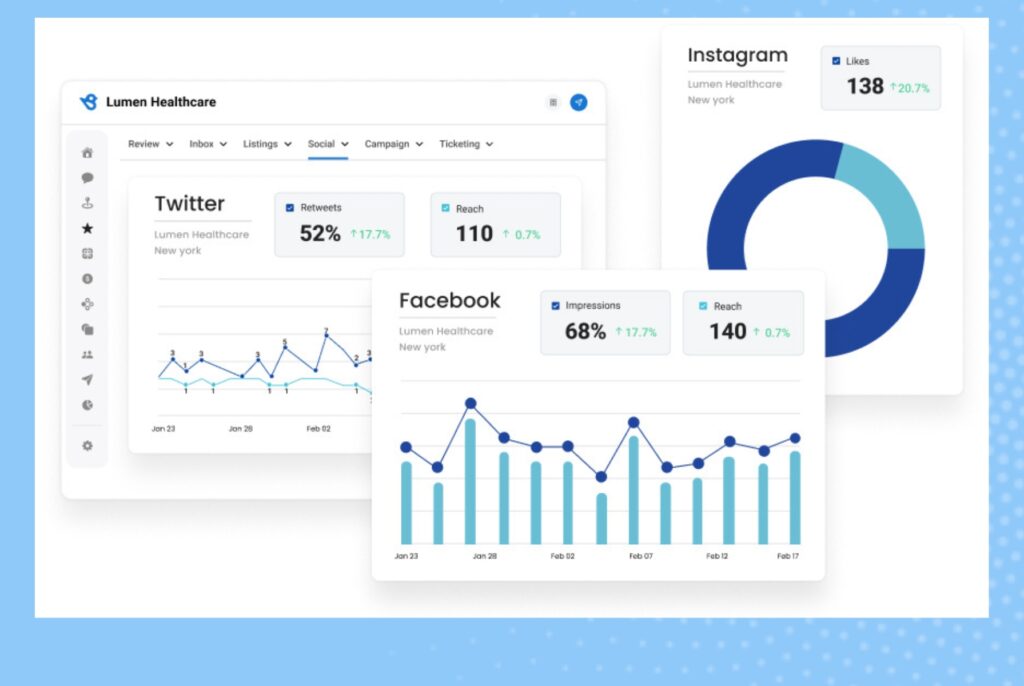
Importance of social media monitoring for business
Social media monitoring for business is not just about safeguarding the brand’s online presence; it’s a strategic approach that facilitates direct engagement with consumers, offers competitive analysis, and aids in crisis management.
Businesses can achieve a granular understanding of their social media metrics by employing a comprehensive suite of monitoring tools and software. This enhances media reporting and listening capabilities. This, in turn, allows for optimizing social media management practices, ensuring that efforts are aligned with the audience’s needs and preferences.
Key benefits of social media monitoring for multi-location businesses
For multi-location businesses, navigating the complexities of social media can be particularly challenging. Given that multiple branches or outlets are spread across different regions or even countries, maintaining a consistent brand image while catering to the diverse needs and sentiments of various local audiences becomes a daunting task.
Each location can generate its own set of conversations, customer feedback, and local competitor dynamics, making it difficult for the central management to keep track of and respond to every local issue effectively.
Here’s how social media monitoring benefits multi-location businesses:
- Unified brand image
- Localized engagement
- Competitive insight
- Crisis management across locations
- Customer feedback and market trends
Let’s delve deeper and discuss these benefits in detail.
1. Unified brand image
Social media monitoring enables multi-location businesses to maintain a unified brand image across all platforms and locations. By monitoring mentions, hashtags, and conversations related to each location, businesses can ensure that their brand messaging remains consistent, yet tailored to local audiences.
2. Localized engagement
One key challenge multi-location businesses face is engaging with customers on a local level. Social media monitoring allows these businesses to identify and interact with local conversations, address specific concerns, and participate in community discussions, enhancing customer engagement and loyalty in each area they operate.
3. Competitive insight
With locations in various markets, understanding the competitive landscape becomes more complex. Social media monitoring provides insights into local competitors’ strategies and customer sentiments, enabling multi-location businesses to adapt and refine their approaches to gain a competitive edge in specific regions.

4. Crisis management across locations
The risk of local issues escalating into wider crises is higher for multi-location businesses. Through effective social media monitoring, businesses can quickly identify potential crises at their onset in any location, allowing for timely and appropriate responses that mitigate risk and protect the brand’s reputation on a global scale.
5. Customer feedback and market trends
Multi-location businesses benefit from a wealth of customer feedback and market trends that are specific to each location. Social media monitoring helps in aggregating this data, providing actionable insights that can inform product development, marketing strategies, and customer service improvements tailored to the needs of each locale.
Our customers, their stories: "We totally depend on Birdeye's Social media calendar. We schedule out our content in advance, which is super helpful. Although we like to say we pride ourselves on each practice operating independently for things like holiday hours, we do create bulk messages and posts that can be used across multiple locations. This saves us a ton of time. It creates consistency, and it's super convenient to log into one dashboard and see everything that's scheduled across different platforms. – Meghan Bingham, Senior Operations Manager, Valley Vet Care
How to develop an effective social media monitoring strategy?
Developing an effective social media monitoring strategy is essential for businesses as it enables them to stay connected with their audience. By keeping a pulse on online conversations, they can preemptively address potential issues, harness opportunities for engagement, and gain valuable insights into consumer behavior and preferences.
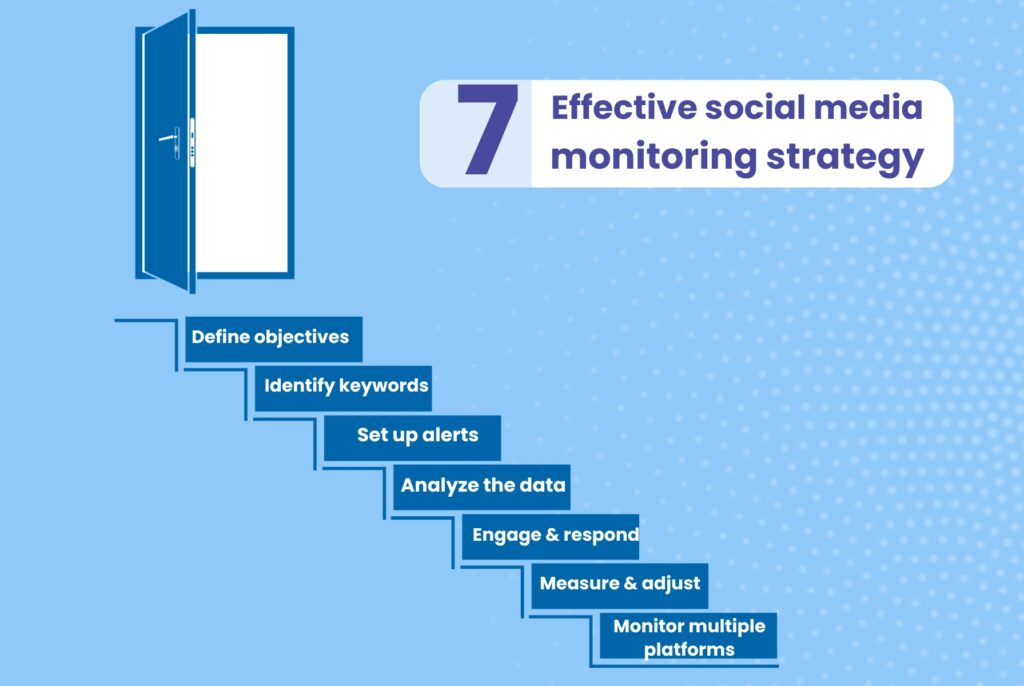
Discover the top seven ways to prepare an unbeatable social media monitoring strategy:
- Define clear objectives
- Identify relevant keywords and hashtags
- Set up alerts
- Monitor across multiple platforms
- Analyze the data
- Engage and respond
- Measure and adjust
Pro-tip: Choosing the right tools to monitor your social media is half the battle won. Explore how Birdeye’s competitive pricing can enhance your business.
Let’s explore these in detail:
1. Define clear objectives
The first step in crafting a social media monitoring strategy is to define clear, measurable objectives. Assess:
- Are you aiming to enhance customer service by responding more promptly to queries and complaints?
- Is your focus on managing your brand’s online reputation, or are you looking to gather competitive intelligence?
Establishing what you hope to achieve sets the stage for a focused and effective monitoring strategy.
2. Identify relevant keywords and hashtags
Did you know that you can boost your social presence with social media meta tags? The backbone of any social media monitoring strategy is the set of keywords and hashtags you choose to track. These should include your brand name, product names, key personnel, industry-related terms, competitor names, and campaign-specific or event-specific hashtags.
This step ensures you’re listening in on conversations that are directly relevant to your business and industry.
3. Set up alerts
To stay on top of mentions in real-time, set up alerts for your chosen keywords and hashtags. Consequently, alerts act as an early warning system, enabling proactive rather than reactive social media reputation management.
Assess:
- What keywords and hashtags are most relevant to our brand?
- How often should we receive notifications?
4. Monitor across multiple platforms
Don’t limit your monitoring efforts to just one or two platforms. Ensure your strategy encompasses all relevant social media platforms where your audience and competitors are active. This might include major networks like X, Facebook, and Instagram, as well as industry-specific forums or platforms like LinkedIn, TikTok, and Reddit.
Assess:
- Which platforms are most frequented by our target audience?
- How can we integrate data from multiple platforms for a cohesive analysis?
Don't underestimate the power of Snapchat as one of the most influential social media platform. And if you have teens and millenials are your customer, this is the platform you must be on. As one of the most active social media platform, you must master its nitty-gritty, especially how to see Snapchat Memories to boost your brand visibility.
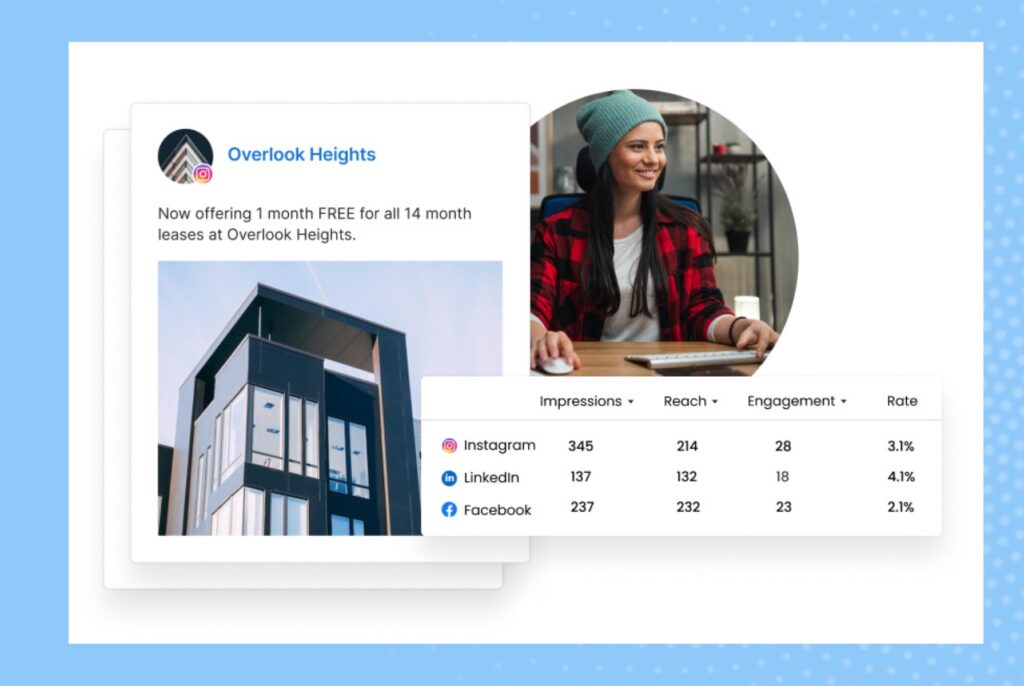
5. Analyze the data
Collecting data is just the beginning; the real value lies in analysis. Regularly review the data to identify trends, gauge sentiment, and uncover opportunities for engagement or improvement. So, look for patterns in customer feedback, monitor the performance of your content, and keep an eye on how your brand stacks up against competitors.
A couple of major questions to assess:
- How does the social media data correlate with the core business metrics?
- What metrics are most relevant to social media goals?
6. Engage and respond
Armed with insights from your monitoring efforts, you should actively engage with audience. Respond to feedback, participate in conversations, answer questions, and acknowledge mentions. This not only helps in managing your brand’s online reputation but also fosters a sense of community and loyalty among your audience.
7. Measure and adjust
Measure the success of your social media monitoring strategy against your initial objectives. Use the analytics provided by your monitoring tools to assess what’s working and what’s not. Based on these insights, adjust your strategy as needed to ensure continuous improvement and alignment with your business goals.
Assess:
- How can we stay adaptable to changes in social media trends and platform algorithms?
- What is our process for regularly reviewing and adjusting the strategy?
By following these steps, businesses can develop a robust social media monitoring strategy that not only helps in managing their online presence but also provides valuable insights into customer preferences, market trends, and competitive dynamics, ultimately driving informed decision-making and strategic growth.
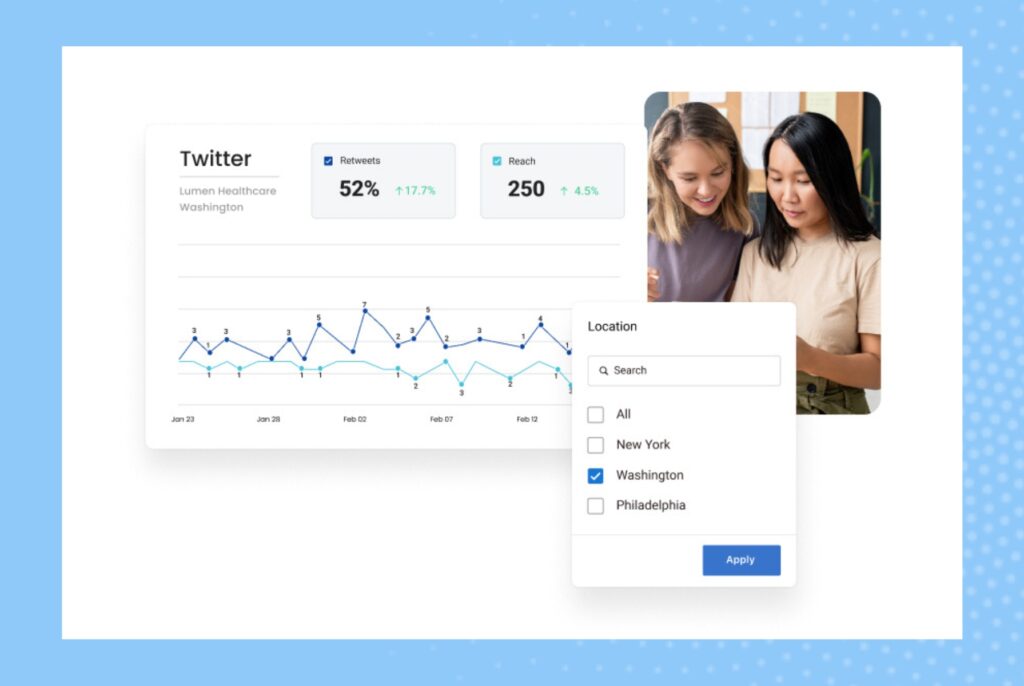
Best practices for social media monitoring
By adopting these unique best practices, multi-location businesses can enhance their social media monitoring strategies. These practices are responsive and deeply attuned to the local nuances influencing brand perception:
- Leverage location-specific listening channels: Beyond global platforms, tap into local social media channels or popular forums in specific regions. This ensures you’re capturing the full spectrum of local conversations relevant to each of your locations.
- Implement geo-targeted monitoring: Utilize tools with geo-targeting capabilities to monitor social media chatter near your locations. This allows for capturing hyper-local sentiments and trends that might not be explicitly linked to your brand but are relevant to your local audience.
- Benchmark and share best practices internally: Regularly benchmark the social media performance of your various locations against each other. Encourage locations to share successful strategies and tactics, fostering a collaborative approach to social media excellence.
- Incorporate local cultural nuances in monitoring: When setting up monitoring tools, account for local slang, language variations, and cultural context to ensure your monitoring efforts accurately capture local conversations and sentiments.
- Conduct regular training and updates: Ensure local teams are trained on the latest social media monitoring tools, tactics, and best practices. Keeping local teams informed and equipped can significantly enhance the effectiveness of your monitoring efforts.

Social media monitoring tips you can’t miss
To maximize the effectiveness of your social media monitoring, keep these tips in mind:
- Use monitoring to anticipate trends and issues before they escalate, rather than simply reacting to them.
- When engaging with mentions, personalize your responses. Occasional authentic replies are better than regular generic replies.
- Don’t just listen to conversations about your brand; keep an eye on your competitors to gain strategic insights.
- Look beyond mentions. Monitor related industry terms and trends to uncover opportunities.
- Use visuals. This gives additional insights into how your brand is perceived.
- Use tags or categories in your monitoring tool to organize sentiment, urgency, or topic mentions. This will make it easier to prioritize and respond.
By following these steps and tips, you can set up a robust social media monitoring system that protects your brand online and provides valuable insights to guide your marketing strategy and business decisions.

FAQs on social media monitoring
Social media monitoring tracks specific mentions, keywords, or hashtags to gather data on brand mentions and audience interactions. Social listening goes deeper, analyzing the context and sentiments behind the data to inform broader strategies.
The best tools vary by need but popular ones include Hootsuite, Sprout Social, and Mention. These platforms offer comprehensive monitoring capabilities across various social networks, providing real-time alerts, analytics, and engagement features.
Absolutely. By monitoring social media, businesses can quickly respond to customer inquiries, complaints, or feedback, enhancing customer satisfaction. It allows companies to address issues promptly and show that they value customer input.
Select keywords that are relevant to your brand, products, or industry. Include common variations, misspellings, and related terms. Regularly update your keywords to reflect new trends, campaigns, or product launches to maintain effective monitoring.
AI enhances social media monitoring by analyzing large data sets quickly, identifying patterns, and predicting trends. It can interpret sentiments, categorize posts, and even suggest the best responses, making the monitoring process more efficient and insightful.
Leverage Birdeye Social media monitoring software to enhance your brand reputation
The market is replete with various social media monitoring tools and software. These range from free tools that offer basic monitoring capabilities to sophisticated platforms that provide in-depth analytics and reporting.
Birdeye, a leading all-in-one reputation management and customer experience platform, empowers brands to proactively manage their online presence.
Birdeye Social media monitoring software assists brands determined to leverage social media marketing to its maximum potential with:
- AI-powered social engagement
- Tracking mentions and hashtags
- Capturing a 360-degree view of the brand’s social index
- Detailed sentiment analysis tools
- Benchmark against competitors easily
- Actionable insights from analytics
- Create strategy based on market trends
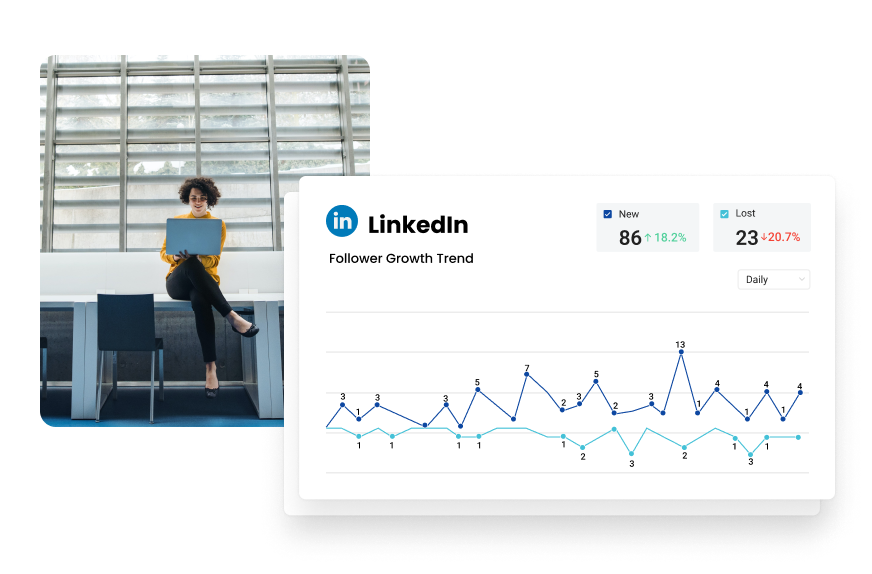
And many more! Are you excited to reap the unlimited rewards? Integrate Birdeye into your CRM today!

Originally published

